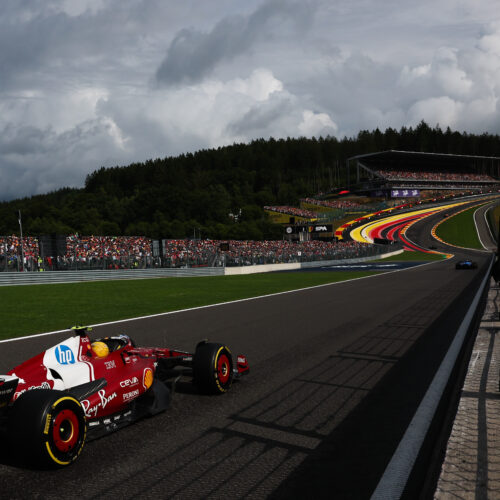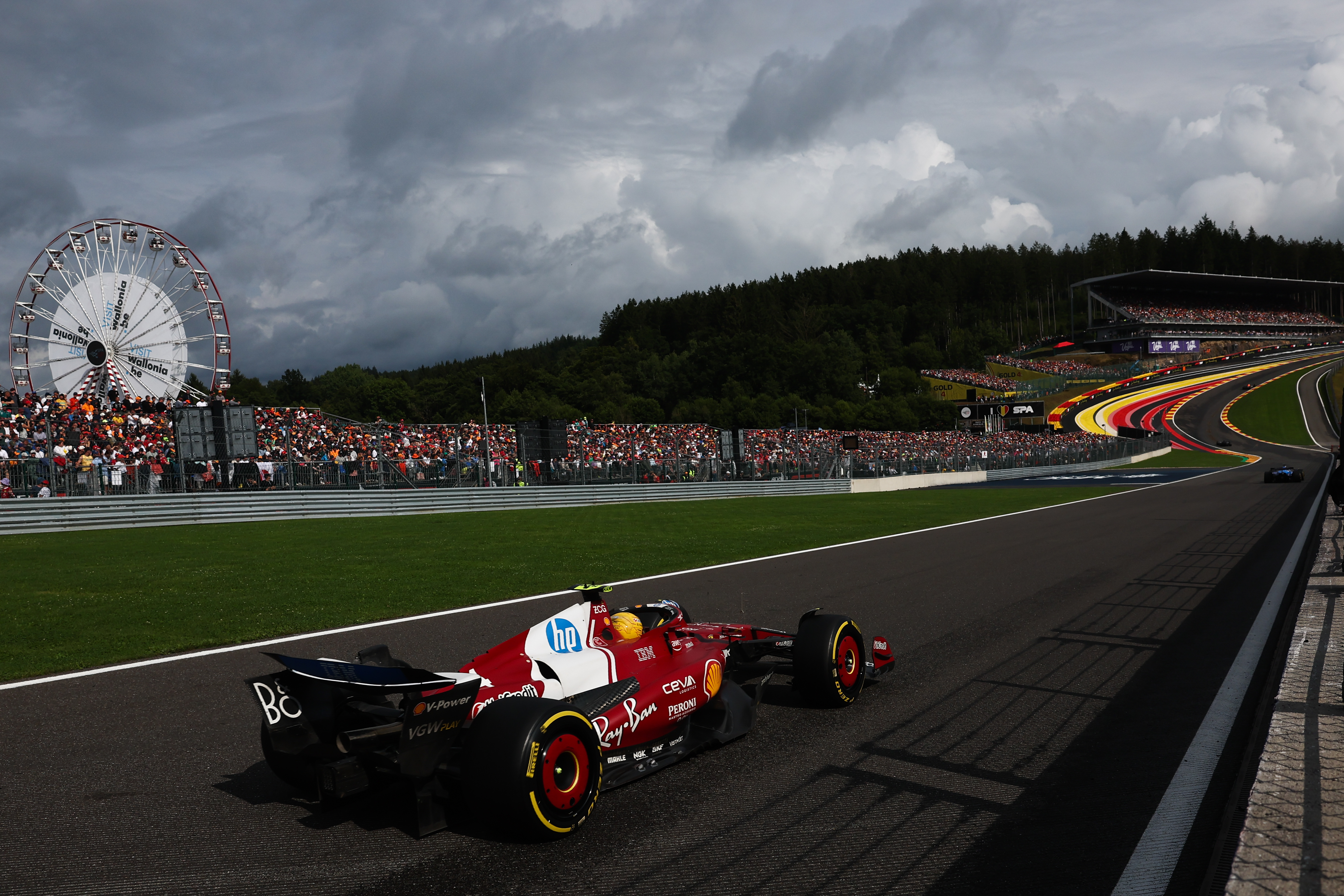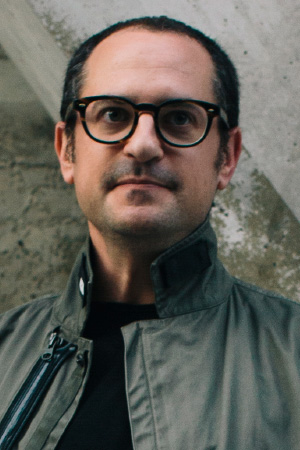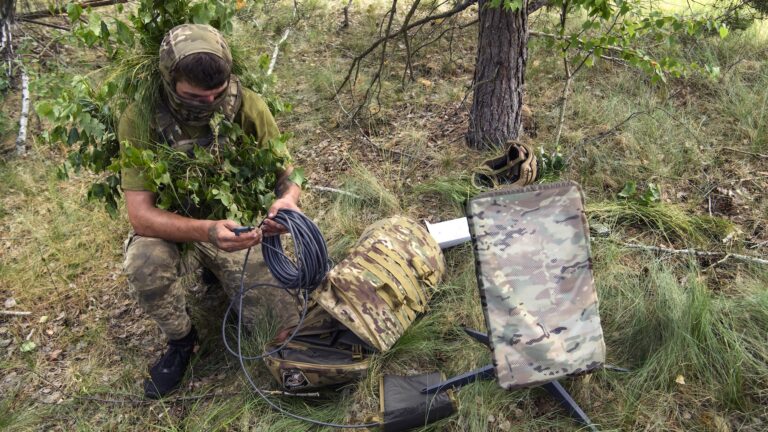Changeable conditions usually make for exciting races, but 2025 was a bit dull.
Does every race track have to have a ferris wheel now? For the record, Eau Rouge is the left-hand corner those cars are approaching—the corner at the top of the hill is Radillion. Credit: Jakub Porzycki/NurPhoto via Getty Images
Does every race track have to have a ferris wheel now? For the record, Eau Rouge is the left-hand corner those cars are approaching—the corner at the top of the hill is Radillion. Credit: Jakub Porzycki/NurPhoto via Getty Images
Formula 1 made its annual stop at Spa-Francorchamps, the historic track that winds its way through the hills and trees of the Ardennes. I’ll admit, I’d been waiting for this one; in fact, I’ve become somewhat of a Spa bore, having fallen in love with the place all over again a few weeks ago while attending the Crowdstrike 24-hour GT3 race.
The 4.3 mile (6.9 km) track delivers, whether that’s as a challenge to the drivers—corners like Eau Rouge, Raidillon, Pouhon, and Blanchiment are the equal of any. There’s elevation change, something that neither Monza nor Silverstone nor Montreal can offer. It has history, dating back well before the start of the Formula 1 world championship in 1949, albeit in a much longer, much scarier version that was truncated by more than half in 1979. The views are spectacular from almost anywhere you choose to watch from, and despite the track’s size, its a pleasant and easy walk through the forest paths (just as long as you can stop imagining that one scene from Band of Brothers).
The food and drink in the region are worth a visit by themselves, and architecture fans will enjoy the Belgians’ chaotic attitude toward planning permission and house renovations, which appears to boil down to “do whatever you like as long as it looks good and won’t fall down.” Pretty good driving roads in the area, too, although they get even better toward the Nürburgring, just over an hour away in Germany.
The other thing Spa has plenty of is weather. (Well, almost always; while it rained during practice for the 24 hour race last month, the race itself was completely dry. As was the Nürburgring 24 the weekend before. And the 24 Hours of Le Mans the week before that. Which scares me.) But there was weather aplenty for the 2025 Belgian Grand Prix.
Sprint weekend
This year Spa held a sprint weekend, significantly shortening the practice time available to teams, most of whom brought technical upgrades to the race. Sprint qualifying was determined by track evolution, with the surface getting grippier as more and more cars attempted to set fast times. Sauber rookie Gabriel Bortoleto in particular garnered some well-deserved attention for getting into SQ3, up among the very fastest cars, as did the Haas of Oliver Bearman (and his anything-but-a-rookie teammate Nico Hulkenberg).
McLaren’s Oscar Pastri secured the pole for the sprint race, lining up next to the Red Bull of Max Verstappen, a team now under the direction of Laurent Miekes after Red Bull’s corporate owners gave founding team principal Christian Horner his marching orders two weeks ago. As I wrote some months ago, for the past few years Red Bull’s design team has built cars that, while theoretically fast, are so difficult to drive at the limit that only Verstappen can exploit them properly. A single driver in the fastest car can win the driver’s championship, but if you want the team’s title—and that’s the one the bonuses are tied to, usually—then you better have both cars scoring good points. Just ask McLaren.
And Red Bull can no longer claim to have built the fastest car, even in Verstappen’s hands.
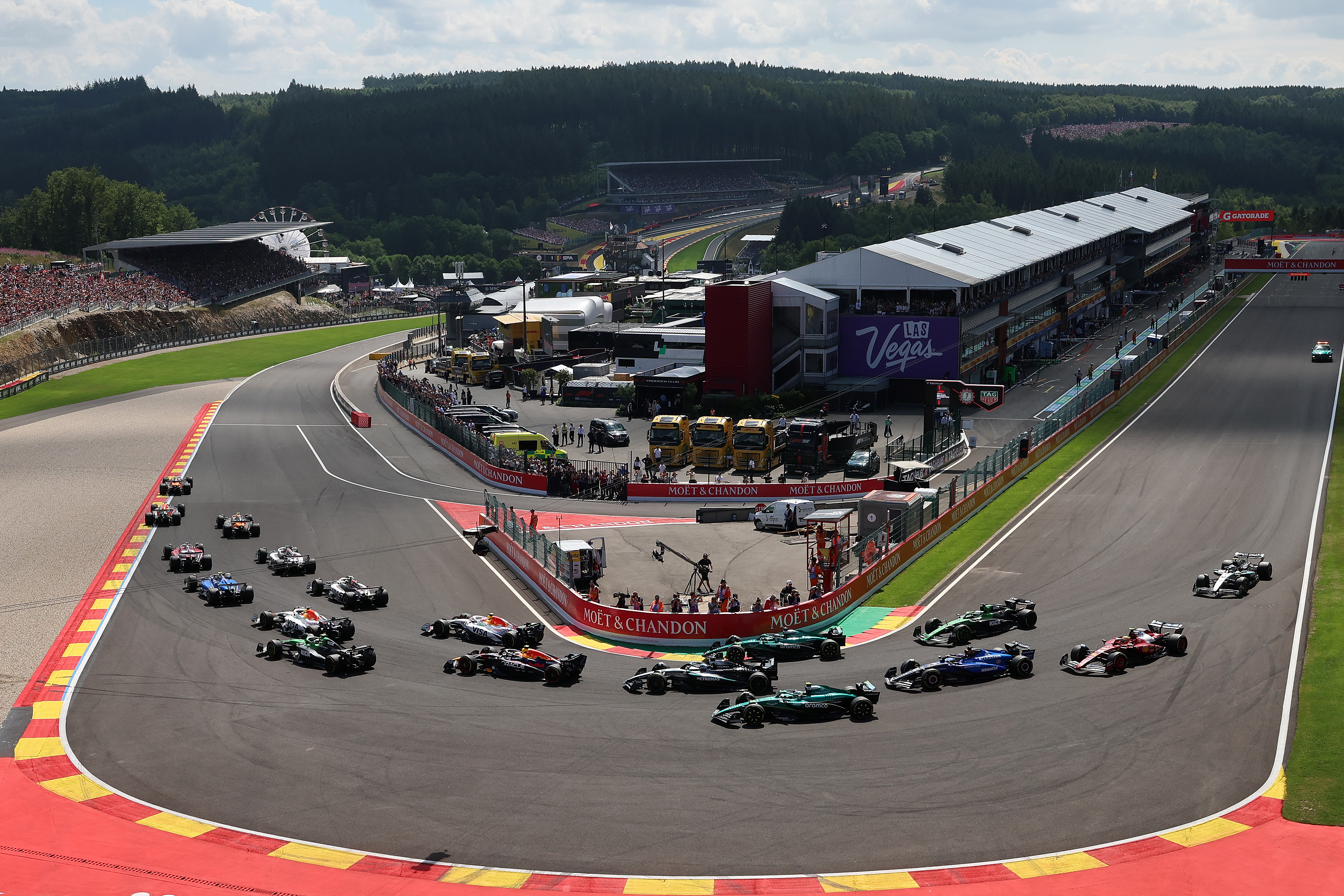
The grid negotiates the first corner—La Source—at the start of the sprint race. Credit: Clive Rose – Formula 1/Formula 1 via Getty Images)
That said, starting in second place at Spa is not so bad. After the slow hairpin of La Source—which McLaren has finally built a car able to cope with—there’s a long run to Les Coombes, with the challenge of Eau Rouge and Raidillon on the way. Verstappen got a good tow from the slipstream behind Piastri’s car along the Kemmel straight toward Les Coombes (isn’t it better when all the parts of the track have actual names and not just turn 1, turn 2, etc?) and got past, staying there in first place until the end, 15 laps later. Behind him, Ferrari’s Charles Leclerc did something similar to Piastri’s McLaren teammate, Lando Norris.
Although the Mclaren is a faster car than either the Red Bull or Ferrari, at Spa its speed came in the corners, and the orange cars were unable to close on or pass their rivals on the straights.
Teams and drivers faced a dilemma for Sunday’s race. They could either set their cars up for dry running, with less downforce and more top speed, or give them a higher downforce setup to capitalize on the rain. The thing is, they have to make that decision before qualifying on Saturday, then stick with it. Changes are allowed to setup, but only if you opt to start from the pitlane.
The McLarens took first and second in qualifying, with an amazing lap by Charles Leclerc that pipped Verstappen to third place by 3 milliseconds. Alex Albon got his Williams into a fine fifth place, and Red Bull’s other driver, Yuki Tsunoda—who has a much better relationship with Miekes than he ever did with Horner—made it into seventh just 0.3 seconds behind his otherworldly teammate. Bortotelo repeated his feat, snatching 10th in qualifying.
Not everyone had a good quali, particularly not Ferrari’s Lewis Hamilton, who was eliminated among the first drivers for the second time in two days, something the seven-time World Champion described as unacceptable. Mercedes’ young phenom, Kimi Antonelli, who replaced Hamilton, was also eliminated among the first batch, part of a miserable weekend for the Italian who just graduated from high school.
Race day
Sunday morning was greeted with plenty of rain, affecting the support races and then delaying the start of the Grand Prix. Formula 1 has both intermediate and wet grooved tires, which pump gallons of water into the air from the track at speed, creating huge clouds of visibility-obscuring spray that, at a place like Spa, just hang between the trees. It’s this lack of visibility, rather than the wet track itself, that makes F1 so cautious, and so the formation lap was held behind the safety car, at which point the race officials decided to red flag things and wait for some more rain to come through and then leave.
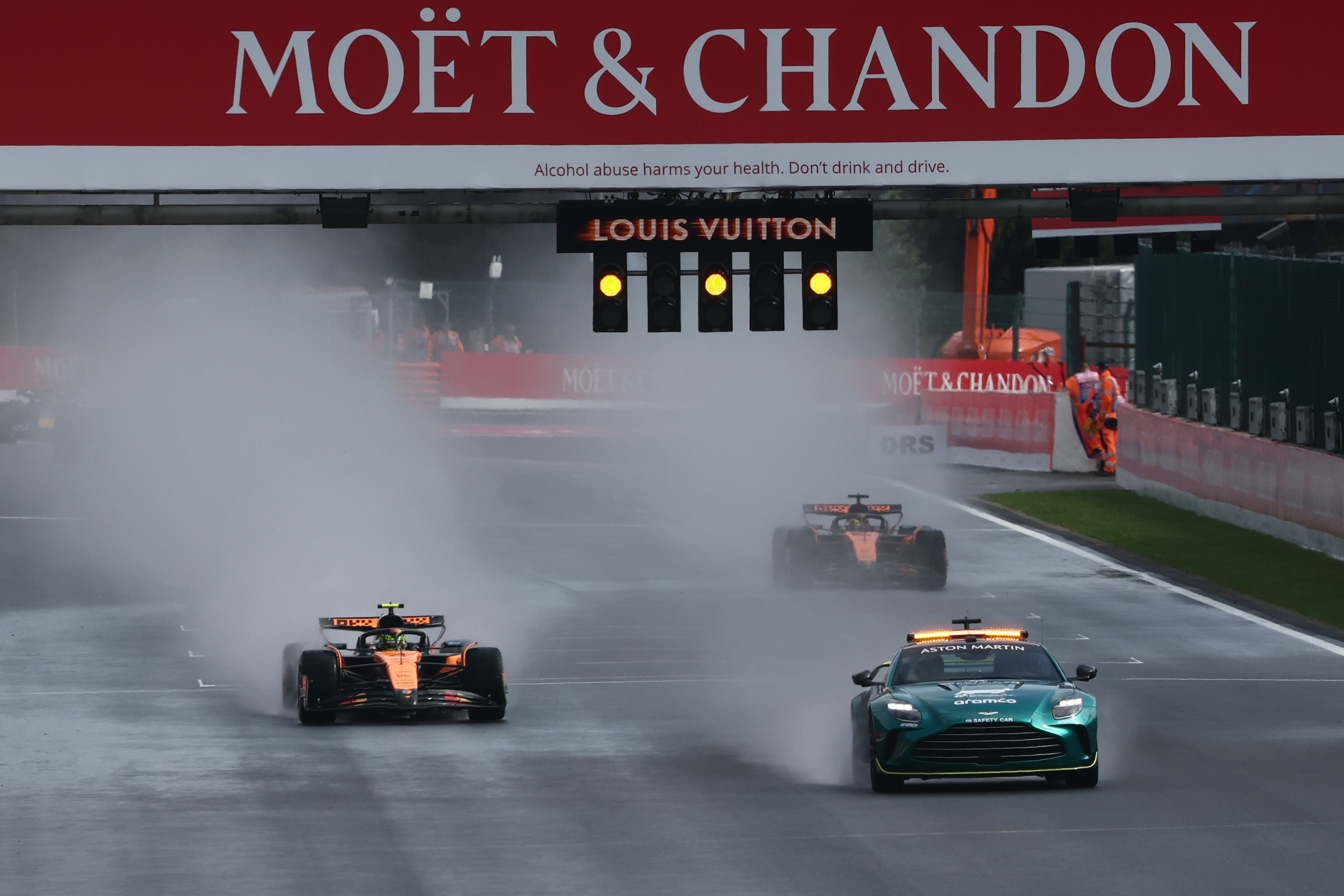
The FIA was far too cautious in bringing in the safety car and getting the race started. Credit: akub Porzycki/NurPhoto via Getty Images
The race eventually began 90 minutes late and circulated behind the safety car for far longer than was necessary, given the emergence of a dry line before too long. The red flag gave plenty of drivers and teams the opportunity to tweak their setups for the rain—something that turned out to be the wrong move given the FIA’s reticence to throw the green flag.
Piastri, in second place behind Norris, did to his teammate what Verstappen had done to him the day before and snatched the lead well before Les Coombes, staying just far enough ahead of his closest rival for the championship throughout the race. A small mistake by Norris and a slightly slower pitstop from his team meant he never got close enough to challenge Piastri for the lead. Behind them, Verstappen was similarly unable to make his way past Leclerc.
Star of the race for me, and the viewers who voted him driver of the day, was Hamilton. Starting from the very back of the queue in the pitlane, Hamilton’s Ferrari was set up for wet weather, and yet again we saw the skills that have won him more F1 races than any other driver in history. Have you ever seen someone overtake at Stavelot? I might have, but only in Gran Turismo 7.
A key to Hamilton’s success was pitting for slick tires at the right time—lap 11, just ahead of almost everyone else—and the British driver finished in seventh place at the end, behind the low-downforce Williams of Albon.
The 2025 race will not rank high in the pantheon of Belgian Grands Prix in terms of a thrilling race, but if you’re a motorsport fan, you owe it to yourself to make it out there sometime. Did I mention the World Endurance Championship has a six-hour race there in May? The tickets are far cheaper than F1, and you get a lot more access, too.
Jonathan is the Automotive Editor at Ars Technica. He has a BSc and PhD in Pharmacology. In 2014 he decided to indulge his lifelong passion for the car by leaving the National Human Genome Research Institute and launching Ars Technica’s automotive coverage. He lives in Washington, DC.

